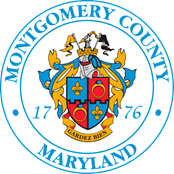Montgomery County, Maryland Información en español

Press Releases
Council Enacts Resolutions to Endorse Equity Emphasis Areas and High-Capacity Transit Areas as Key Concept Tools for Regional Planning
For Immediate Release: Tuesday, November 16, 2021
ROCKVILLE, Md., Nov. 16, 2021— Today the Montgomery County Council unanimously approved two resolutions led by Councilmember Nancy Navarro to support the Metropolitan Washington Council of Government's (MWCOG) resolutions on new regional planning concepts that would allow for more informed decision-making and action in the region. One resolution endorses Equity Emphasis Areas (EEA) as a key planning concept and tool, while the other endorses the same for High-Capacity Transit (HCT) areas. Both resolutions are cosponsored by all other Councilmembers.
EEAs are defined as locations with high concentrations of low-income individuals and/or racial and ethnic minorities, while HCT areas are locations around metrorail, commuter rail, light rail, bus rapid transit and streetcar stations that are in place or will be in place by 2030. Both areas have been identified by MWCOG as planning areas that the County can prioritize in planning and decision making. In Montgomery County, there are 49 EEAs and 47 HCT station areas. The entire MWCOG region includes 351 EEAs and 225 HCT areas.
“I am proud of the Council for reaffirming our commitment to sustainable and equitable growth as outlined by both the Montgomery County Economic Platform, which I spearheaded, and our adoption of the MWCOG’s High-Capacity Transit and Equity Emphasis Areas Resolutions. Montgomery County should continue to adopt best practices that help move the region forward. The adoption of these resolutions shows that we are willing to do the work to get there,” said Councilmember Navarro, chair of the Government Operations and Fiscal Policy Committee and Vice President of MWCOG. “We have reached a point in our region’s recovery where we can really start thinking about what kind of future we would like to see for our region, and how we can best leverage our existing assets to uplift previously underserved communities, while fostering an environment which is conducive to future investment. We have an opportunity to move away from the status quo, and towards a brighter tomorrow.”
MWCOG recommends that their member jurisdictions adopt these planning concepts into their planning and program areas to address racial equity disparities in the region and help enhance opportunities. MWCOG’s map for the EEAs can be found here, and that of the HCT areas can be found here.
On Oct. 13, 2021, the MWCOG Board of Directors passed Resolution R47-2021 which endorsed EEAs as a key planning concept and tool to guide future growth and investment. It would guide decisions related to infrastructure investment, planning programs, education, health care, land use, housing and economic opportunities to help local communities in the region become more racially equitable. The same day, it also passed Resolution R46-2021, endorsing HCT station areas as a key planning concept and tool to guide future growth and investment decisions by optimizing land use around these station areas, enhancing transportation connections and creating transit-oriented communities so the region can accommodate future growth and ensure quality places where all residents can thrive.
The staff report on the resolution to support MWCOG’s endorsement of EEAs as a key planning concept and tool can be found here, and the resolution to support MWCOG’s endorsement of HCTs as a key planning concept and tool can be found here.
# # #
About the Metropolitan Council of Governments (MWCOG)
MWCOG is an independent, nonprofit association, with a membership of 300 elected officials from 24 local governments, the Maryland and Virginia state legislatures, and U.S. Congress. Every month, more than 1,500 officials and experts connect through MWCOG to share information and develop solutions to the region’s major challenges. The Board of Directors is MWCOG’s governing body and is responsible for its overall policies. In addition, a wide network of city and county managers, police and fire chiefs, housing and planning directors, environmental experts, public health officials, transportation planners, and more coordinate through MWCOG’s committees.
Media Contact: Roland Ikheloa 240-777-7924, Lucia Jimenez 240-777-7832
Categories: Nancy Navarro